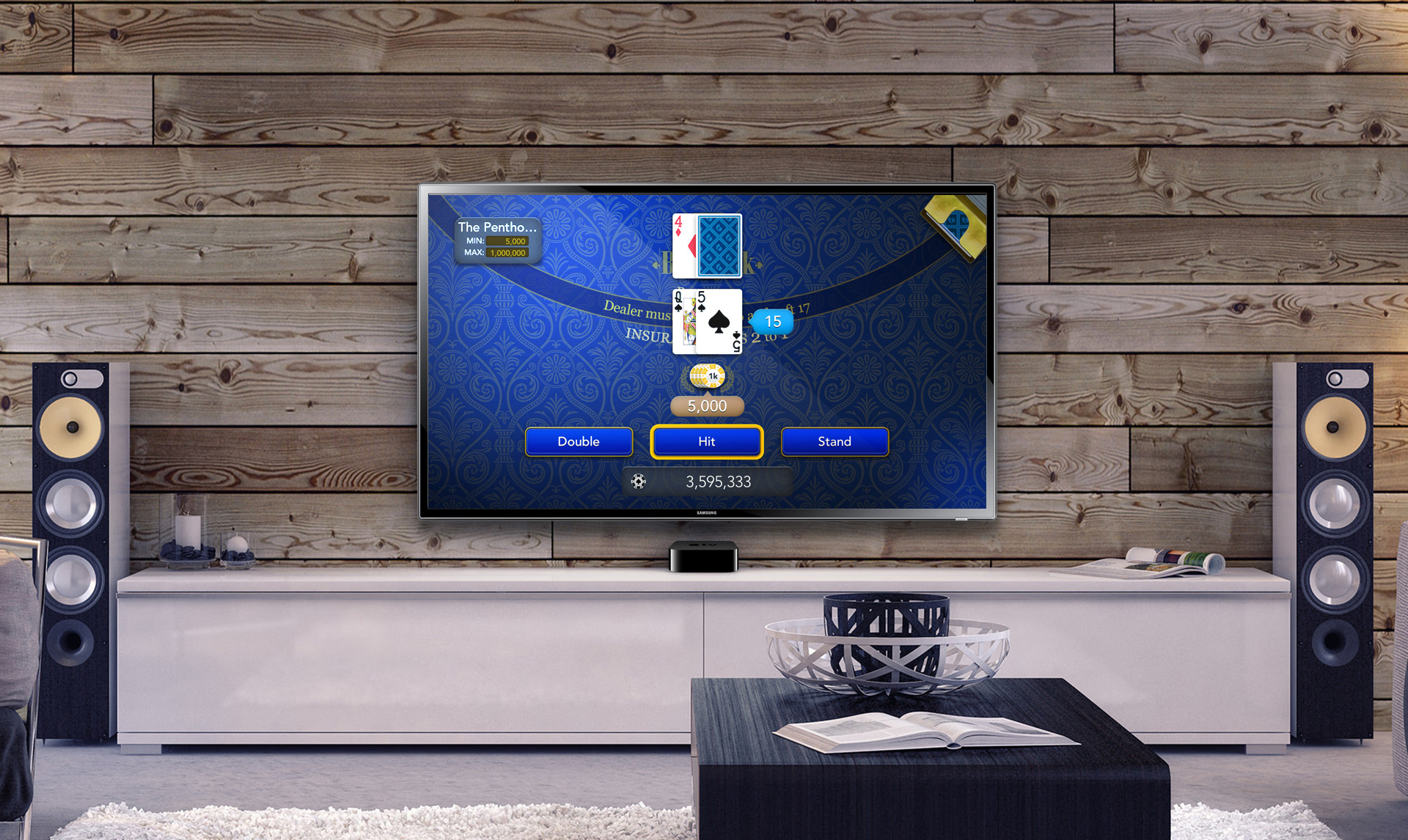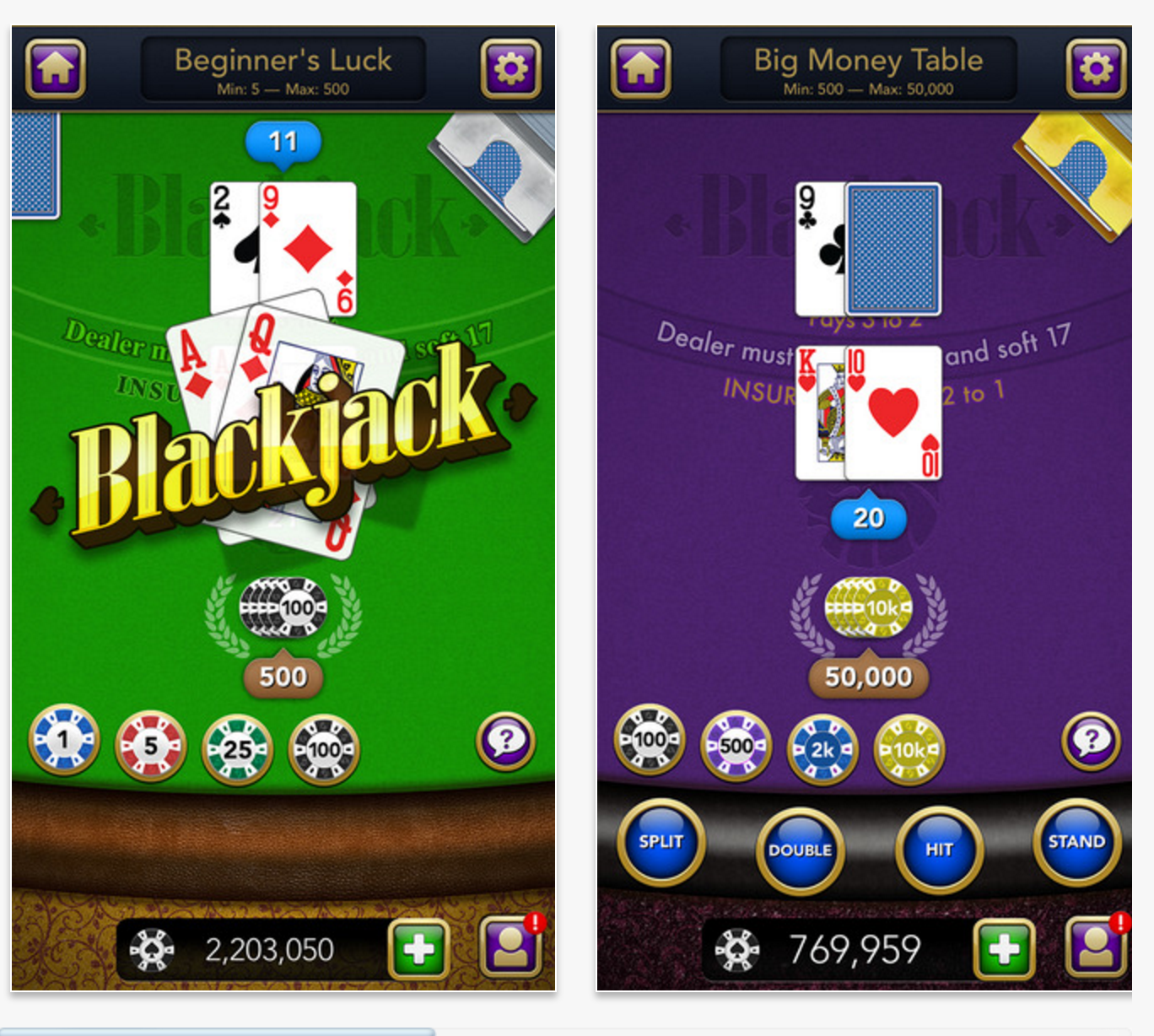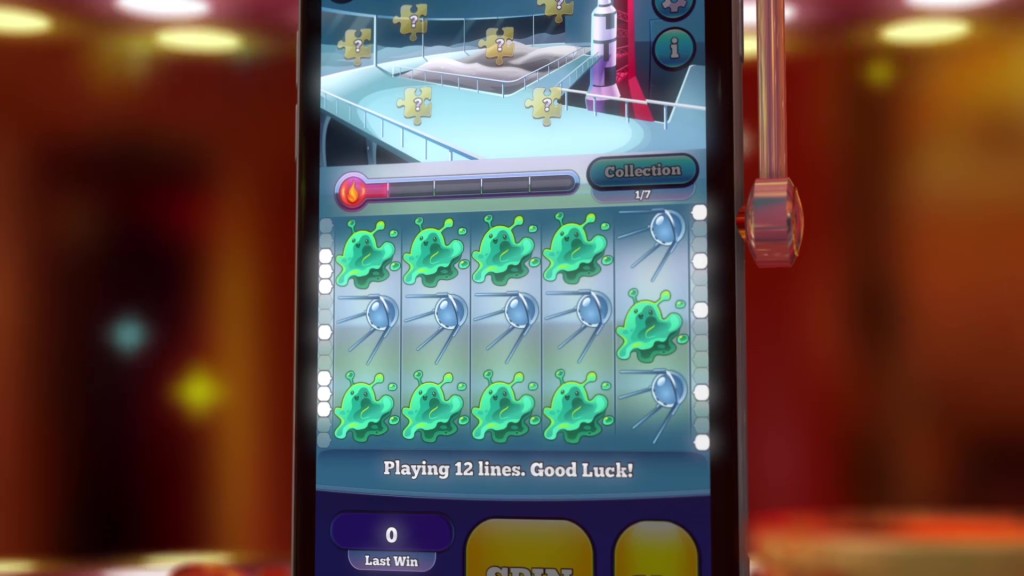In 2008, MobilityWare released the free-to-play casino card game, Blackjack, on the Apple App Store and it became a success with a steady but stagnant user base for a number of years. Then, using new tools and technology, the developer decided to update the game, using analytics to make a few simple but effective changes that included:
- Changing the amount of chips included in each tier of in-app purchase (IAP).
- Redesigning of game lobby to better expose players to the different tables, in hopes of moving them up from lower to higher tables.
- Segmenting, measuring and re-segmenting certain player experiences based on their spend behavior.
- Increasing the frequency and sophistication of LiveOps campaigns—like the Halloween “Trick or Treat” and St. Patrick’s Day “Find the Leprechaun” promotions—that combine push notifications, in-app messaging, and sales.
- Revamping the in-game achievement system to create both a sense of progression and a more robust set of goals for player to strive for.
The results were astounding, as the game soon saw daily active users increase by more than 300 percent, and in-app purchases rose by over 400 percent. To ensure it wasn’t a fluke, a similar approach was applied to Hot Streak Slots, which is now seeing steady growth, while other previously released games are being reinvigorated.
Alex Tarrand, senior manager of Live Operations for MobilityWare, spoke to [a]listdaily about how analytics can be used to add a few new tricks to some old games.
 What convinced MobilityWare to revisit a 2008 game with new analytics data?
What convinced MobilityWare to revisit a 2008 game with new analytics data?
As a studio we wanted to experiment with freemium models as well as vet the value of a marketing automation tool. Blackjack was a simple ad-funded game that we felt had a lot more potential.
What were some of the trends you saw from reviewing analytics data?
The game employed only simple telemetry at first. When we decided to do the initial overhaul we added a marketing automation solution (push, IAM, A/B) and doubled the volume of event tracking to get a better sense of what our players were doing. We learned a ton! One of the biggest learnings was that our early retention wasn’t great. Our hypothesis was that players were not getting involved in our table system because it was too deep in the user interface (UI). We also suspected that players were dropping off as the game didn’t have a good sense of goals.
How were analytics used to improve Blackjack?
Once we added a dedicated data analyst and product manager, the game’s trajectory changed. We began diving into a few of the metrics that weren’t as healthy as we wanted them to be and enacting some real product change. In the case of early retention we implemented a new lobby that put the table system on the forefront, and immediately saw a jump in table engagement. We also added a robust achievement system and saw a baseline increase against all early retention metrics. Both features were arrived at, and later evaluated, using game data.
Does the approach also improve user acquisition for older games?
Absolutely, the market is so competitive that you need to have a polished offering to get players to install. Many of the changes have also positively impacted the player lifetime value (LTV), making it easier to continue to invest in the title.
In what ways did analytics help improve Hot Streak Slots?
So much! Slot games are surprisingly complex with hundreds of variables that can be employed to make individual machines more engaging. We read our machines weekly to make sure they are providing the expected results. Social casino, as a genre, needs more real-time analytical attention than most.
The results from Blackjack are quite impressive. Were you surprised by them?
Thanks! We knew that we had something special, but have been consistently surprised at the continued upward trajectory. Our live-ops team are always thinking of creative ways to engage the players through events, pairing these with new mechanics has enabled Blackjack to continue to exceed our forecasts and expectations.

Does platform (iOS, Android, Apple TV, etc.) play a role in how players engage with games?
There are some subtle metric differences between the platforms; however, one of the biggest drivers is ecosystem offerings. Apple continues to provide new venues for our industry that can increase engagement. We recently ported Blackjack to Apple TV and have been studying the platform through our analytics. The daily active user base is modest, but having a TV SKU allows you to open up more player conversations. We engaged players on social, as well as in-app, to evangelize the TV game and definitely generated some interest. In fact, we had one player reach out to our customer service team to find out if they can receive special TV promotions!
Can a similar approach be applied to puzzle games like Sunny Shapes?
Some general key performance indicators are applicable to both casual puzzle and casino, such as retention, conversion, etc. Sunny Shapes is unique in that it started as a wearable watch game first, then grew to into a more robust experience after it generated a lot of internal buzz. We are going to be watching it closely, but the breadth of analysis is more shallow than a game like Blackjack.
Will you be reviewing these games again, with newer analytics data, at some point in the future?
I’m 100 percent positive we will. We examine our analysis daily and add additional tracking with every new mechanic. We have also done a lot of work around segmentation in order to make each player’s experience more relevant and tailored to them. We re-factor our segmentation on a regular basis; like most things, there’s always room for improvement.


